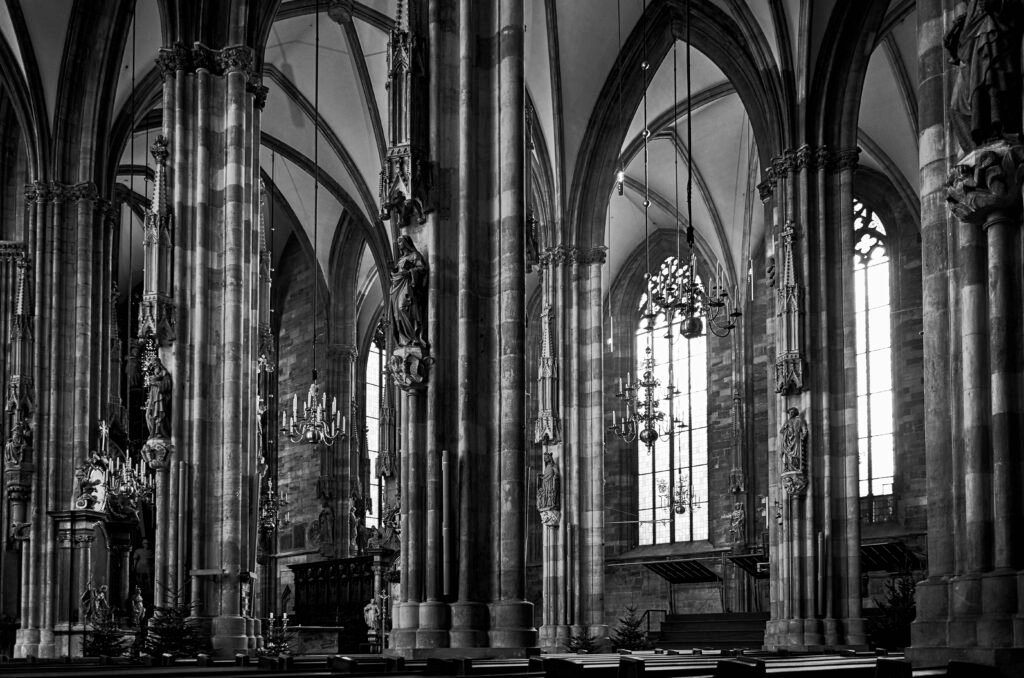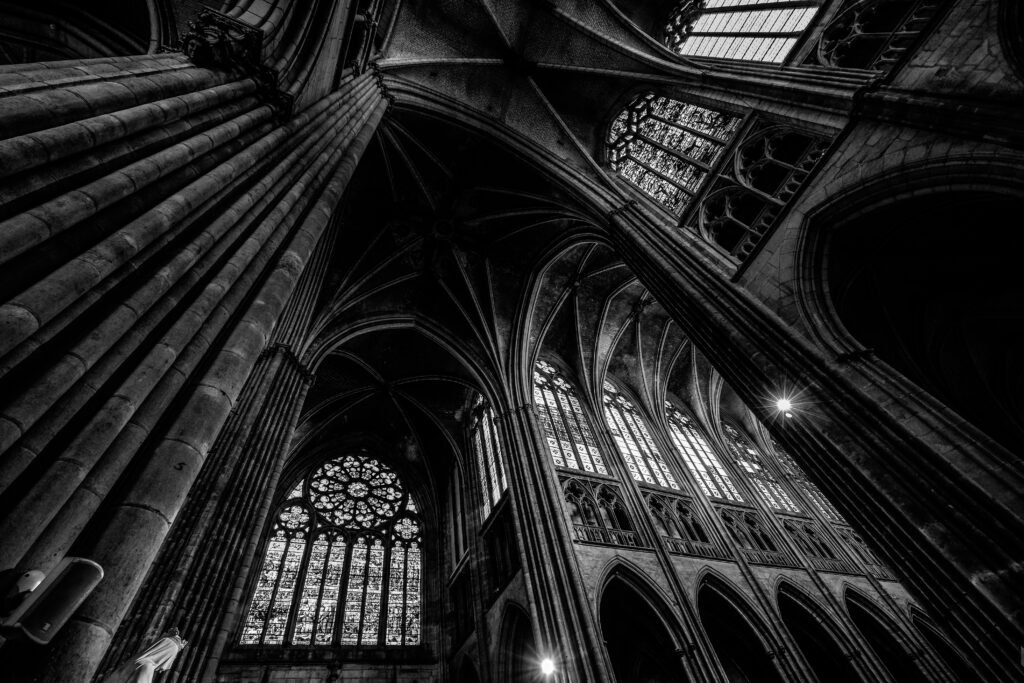Gothic art is one of the most powerful pillars of the medieval European imagination. More than an artistic style, it represents a worldview in which faith, light, and verticality are symbolically intertwined. From the 12th century onward, as it began to consolidate into its own visual language, Gothic art came to shape churches, sculptures, and stained glass with a higher goal: to create a complete spiritual experience.
Over time, the Gothic style outgrew religious boundaries. Its dramatic quality, emotional emphasis, and spiritual depth have inspired artists across centuries. Today, Gothic art in contemporary times reemerges not only in architectural restorations but also in installations, fashion, music, and digital art, proving that this medieval legacy still resonates today.
Gothic Art: The Cathedral as a Symbolic Body of Faith
Gothic architecture was born as a cry toward the heavens. Cathedrals like Chartres, Notre-Dame de Paris, and Westminster Abbey were built not only with stone and mortar but with a desire to reflect the sacred through structure. Its most iconic elements—pointed arches, monumental stained glass, and flying buttresses—served not only engineering purposes but spiritual ones.

According to Otto von Simson, in The Gothic Cathedral: Origins of Gothic Architecture and the Medieval Concept of Order (1956), Gothic architecture embodies a philosophical and theological system in which light symbolizes divine presence. The stained-glass windows filtered sunlight, creating a supernatural atmosphere, while the towering structures evoked transcendence. Rather than concealing the spiritual world, Gothic architecture sought to reveal it—guiding the believer’s gaze upward toward salvation.
Additionally, the sculptural programs on cathedral portals, depicting scenes like the Last Judgment or saints’ martyrdoms, served as visual narratives. These works taught doctrine, brought the sacred into contact with popular culture, and fostered a collective sense of awe. Gothic art was not merely contemplative; it was educational and communal.
Expressiveness and The Road to Modernity
Gothic sculpture moved away from static Romanesque forms. It embraced emotion instead. Faces began to show suffering, ecstasy, and compassion. Rolf Toman discusses this in a 1995 book. The book is Gothic Art: Architecture – Sculpture – Painting. He states this shift paved the way for a new approach. It was a new view of the human body in Western art. Consider Mary’s pain at the foot of the cross. Think of the ecstasy of angels. Also, Christ’s stern gaze during the Last Judgment. These revealed an intensity not seen before.
This expressiveness directly influenced later movements. It influenced the Renaissance. Thus, it also echoed in Romanticism and Symbolism. It even influenced performance art. Contemporary Gothic theater revives medieval elements. It is performed by groups like La Fura dels Baus. They create immersive experiences. These blend architecture, music, and the human body.
Today, Gothic aesthetics appear in many forms. We see them in urban murals. They are in digital visual culture. And in dark-themed music videos. Also, in installations by artists like Rachel Whiteread. Themes like darkness, absence, and the sublime remain powerful. These are central to the Gothic tradition.
Gothic Art Today: Between Ruins and Reinvention
Institutions such as the Musée de Cluny in France and the Victoria and Albert Museum in the UK preserve some of the world’s most significant Gothic collections. However, the Gothic legacy is not limited to conservation: it is actively reinvented through contemporary artistic lenses.
French artist Jean-Michel Othoniel reinterprets Gothic stained glass using blown glass sculptures in secular public spaces. In the digital realm, designers create augmented-reality environments inspired by medieval architecture, transforming the Gothic into an interactive and multisensory experience.
The MoMA in New York has highlighted these cross-temporal connections in its exhibitions. In its recent curatorial selections, works that evoke verticality, drama, and symbolic light are often placed in dialogue with the Gothic tradition—even in abstract or experimental formats.
When we explore Gothic art in contemporary times, it becomes clear that it never truly disappeared. It evolved, adapted, and survived through new codes. Its lasting value lies in its ability to provoke emotion, invoke mystery, and direct the gaze—and the soul—beyond what is visible.
The Eternal Return of The Sacred in Visual Form
Gothic art is a bridge between worlds: the visible and the invisible, the material and the spiritual, the past and the present. Its survival—though transformed through new media—demonstrates the symbolic power of the medieval aesthetic. In an age of immersive technologies, visual overload, and constant acceleration, the Gothic style reappears as both an antidote and an invitation to pause and contemplate.
In times of disillusionment and haste, this art reminds us that the sublime can still be built—whether in stone, in light, or in pixels—and that visual spirituality remains possible, even in a secularized world. To revive Gothic art today is to reaffirm art as a sensory, transcendent, and collective experience.



